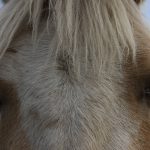The ongoing outbreak of avian influenza in North America has featured a number of unusual developments.
Tag Archives Animal Health column

Cardiac defects in calves rare but likely underdiagnosed
A recent case of stillborn and weak beef calves was brought to my attention by a veterinarian who was working to diagnose the cause of calf mortality.

Fibre is more than food — it is habitat for an ecosystem
When I was a veterinary student, there was a moment that fundamentally reshaped how I understood nutrition.

Protecting yourself from zoonotic diseases
Close contact with livestock during calving or lambing can increase exposure to potentially devastating illnesses
As many producers and veterinarians work with animals on a regular basis, it can be easy to become careless about protecting ourselves from zoonotic diseases.

Pelvic instability often undiagnosed in young horses
Recent findings suggest that pelvic collapse, caused by incomplete fusion of the pelvic symphysis, is a widespread yet largely undiagnosed condition, especially in young thoroughbreds, and likely prevalent in other sport horses.

BSE testing continues despite country’s clean bill of health
Testing for BSE at slaughterhouses continues, despite the dramatic decline in cases in recent years and the fact that Canada’s last case was in 2015.

Viruses significantly damage the brain of cattle fetuses
When pregnant cattle get infected with pathogens, there can be severe consequences for their fetal calves. Bovine viral diarrhea virus (BVD) is an important example of this.

New research studies modified live vaccines and fertility
Vaccines are an important part of protecting our herd’s health and fertility.

The art and nuances of effective slow feeding for horses
Slow feeding has gained significant traction within the horse community in recent decades, driven by a deeper understanding of equine digestive physiology and the importance of natural foraging behaviours.

Producers must take foot-and-mouth disease seriously
NONE
The recent foot-and-mouth disease outbreak in Germany tells us that we all collectively need to be on the lookout for it.




